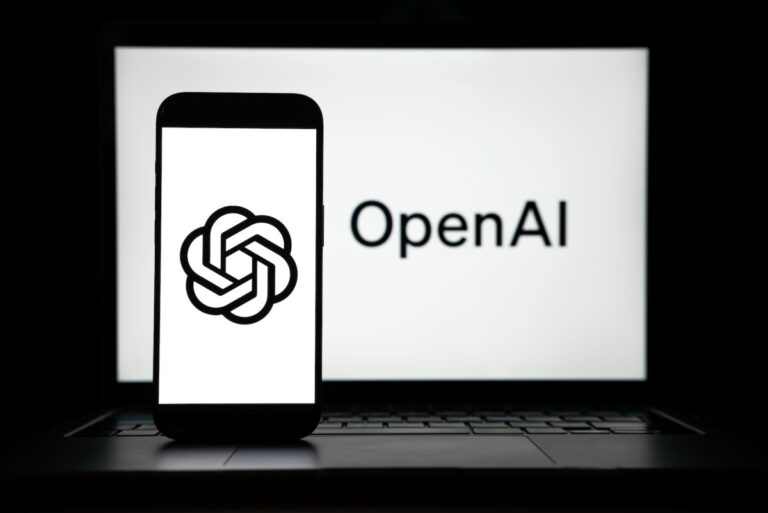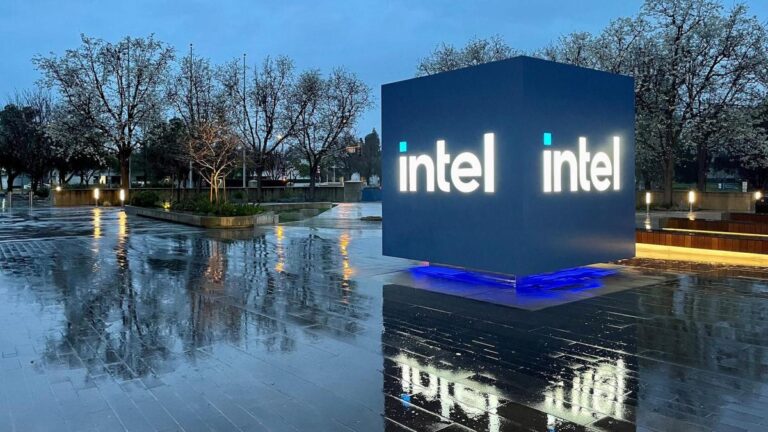As the Trump administration focuses on antisemitism at institutions like Harvard University, in the background, professors and higher education advocates are thinking about what might come next.
Some see the Trump administration’s push against diversity, equity and inclusion — also known as DEI — as the next frontier for controlling what should or shouldn’t be taught or researched at colleges and universities.
“The Trump administration could come after universities the way it’s coming after so-called antisemitism. They can say we have this executive order, the executive order defines sex as only a binary male or female. And there’s no such thing as gender. Therefore, if you’re teaching gender studies, you are violating the executive order of the government,” said Laurie Essig, Professor of Gender, Sexuality, Feminist Studies at Middlebury College.
Some conservative leaders don’t believe the federal government is able to control what is taught in private institutions, but agree that the attacks on DEI will only continue.
“Diversity, equity and inclusion came to mean in practice, something very different from those words. It became the imprimatur for a system of race-based preferences, for identity-based division, for gross oversimplification and stereotyping of individuals and became an excuse to teach some deeply ideological, deeply problematic views as uncontroversial,” said Frederick Hess, senior fellow and director of education policy studies at the American Enterprise Institute, a right-leaning think tank.
The Trump administration has also signed a flurry of executive orders related to DEI. One includes calling for public and private colleges to end DEI programming in a January order, claiming that it diminishes “the importance of individual merit, aptitude, hard work and determination.”
Another executive order in April called for the punishment of accreditors if they require “unlawful discrimination” under the “guise” of DEI initiatives.
More than 50 universities are being investigated for alleged racial discrimination, according to a U.S. Department of Education announcement in March.
And, the Supreme Court decided on Thursday that the Trump administration can slash hundreds of millions of dollars’ worth of research funding in its push to cut federal DEI efforts.
Yielding to ‘political masters’
College and university officials have been considering how to respond to the Trump administration’s actions to make sure they are in compliance with federal law, according to Dr. Emmanual Guillory, senior director of government relations at the American Council on Education.
The reconsideration of DEI programming is occurring across academia, but especially in states like Texas that have emphasized anti-DEI initiatives, he said.
“Florida and Texas have been leaders in attacks on higher education, including on DEI. But what we see is the same issues playing out in states across the country.”
Amy Reid, PEN America’s Freedom to Learn Foundation
While Texas and conservative-leaning states might be scaling back their DEI programming or classes, blue states are as well, according to Amy Reid, Senior Manager for PEN America’s Freedom to Learn program.
“Florida and Texas have been leaders in attacks on higher education, including on DEI. But what we see is the same issues playing out in states across the country,” Reid said.
Some faculty have already felt like their universities have begun capitulating to the Trump administration by renaming or walking back their DEI offices — including at Harvard University, the Massachusetts Institute of Technology and Northeastern University.
Harvard faculty members were told last week that ‘Black Lives Matter’ signs in their office windows violated campus policies and must be taken down.
“You would have to be very naive not to see the link between the sign’s removal and the university’s repeated efforts to placate the Trump administration, on issues ranging from DEI to the Israel-Palestine conflict. This action is but the latest instance of Harvard yielding to donor pressure and political masters,” Harvard professor Bence Ölveczky told MassLive.
Why DEI as the next step?
While the Trump administration has prioritized cracking down on DEI, some states have also been working on it.
As of April 28, 20 states have passed anti-DEI legislation, according to Campus Reform.
“This was pioneered at the state level in places like Idaho and Florida, where state boards and state politicians began to scrutinize higher education and what’s being taught, the names of courses, the content of those courses, the structure of the gen-ed [general education] program and began to … attack these programs in various ways,” said Carrie Baker, the chair of the Program for the Study of Women, Gender and Sexuality at Smith College.
While states have pushed the issue, it has also been taken on by people such as Christopher Rufo, who has led a national movement opposing critical race theory and DEI.
The Trump administration has appeared to follow the direction of Rufo as he has called for the dismantling of diversity, equity and inclusion departments and the U.S. Department of Education and adjusting or cutting federal funding to institutions in an effort to change their ways.
Christopher Rufo talks to faculty and staff on the campus of New College of Florida in Sarasota, Fla., on January 25, 2023. (Thomas Simonetti for The Washington Post via Getty Images)
Rufo, a senior fellow at the right-wing Manhattan Institute, a New York City think tank, has said higher education should be the first field of battle.
Rufo has been involved in reshaping the liberal arts school, New College of Florida. The new Board of Trustees fired the president, abolished the DEI Department, shut down the Gender Studies program and established colorblind admissions. He claimed it has “become the opening move in a conservative counterrevolution.”
Reid, who formerly worked at New College of Florida as a professor of French language and literature and director of the Gender Studies Program, said the focus on DEI is a “sleight of hand that masks the effort to censor higher education behind a glib campaign against an imaginary foe — DEI.”
While Rufo isn’t the only one pushing the anti-DEI movement forward, Hess, from the American Enterprise Institute, said Rufo has had an effective public voice.
“I think Rufo was a spark that helped awaken a lot of Republicans to issues that many of us have been voicing frustrations with. But he did a very effective job of connecting this to concrete instances in ways that broke through,” Hess said.
The anti-DEI movement is also part of a larger blueprint from Project 2025, a conservative master plan that reenvisions a federal government with expanded presidential power, including over private and public universities and colleges.
In the nearly 1,000-page document, it lays out the way indirect costs at universities should be capped in order for the federal government not to pay for DEI and “leftist agendas” — which has been done and is being fought in court.
“So there’s no way that it [Project 2025] couldn’t be a major influence on the Trump administration in all the different areas, not just education.”
Adam Kissel of The Heritage Foundation, which published Project 2025
It also states that the terms DEI, sexual orientation and gender identity, among others, should be deleted from every federal rule, agency regulation, contract, grant, regulation and piece of legislation.
Adam Kissel, a visiting fellow at The Heritage Foundation, which published Project 2025, said the blueprint “represents, in a sense, the consensus of the conservative movement.”
“So there’s no way that it couldn’t be a major influence on the Trump administration in all the different areas, not just education,” Kissel said.
Could higher ed in Mass. change?
Despite Massachusetts’ reputation for being liberal, it’s not insulated from federal attacks on DEI, according to Baker, at Smith College.
She worries that the Trump administration will threaten institutions’ accreditation if they don’t eliminate certain departments. Columbia and Harvard have already had their accreditations threatened over antisemitism.
“The fact that Columbia put their Middle East studies under receivership or that Harvard canceled an issue of a Middle Eastern journal on Palestine. I mean, our universities are so heavily funded, particularly research universities, by the federal government, and Trump is weaponizing that to try to coerce them to change their curriculum, to change who they’re hiring, to change who they admit. And these are private institutions, but they’re trying to basically commandeer these institutions to achieve their own political goals,” Baker said.
Baker and Essig are part of a broader organizing effort from chairs of gender studies departments that are speaking with their accreditation agency and school administrations to prep them for potential attacks on their departments.
“I think it doesn’t take a lot to scare people into compliance, and obviously, it affects who will and won’t come to the U.S. for an education. And that shapes our education as well,” Essig said.
While cutting gender studies programs is at the forefront of what the chairs are concerned about, they believe that the dismantling will go beyond gender studies, into ethnic studies and others, Essig said.
Despite Massachusetts’ reputation for being liberal, it’s not insulated from federal attacks on DEI on college campuses, said Carrie Baker, chair of the Program for the Study of Women, Gender and Sexuality at Smith College. Baker is shown speaking about an ordinance at an Easthampton City Council hearing on July 5, 2025. (Juliet Schulman-Hall/MassLive)
Forcing departments like these to close would be harmful, according to Reid, from PEN America.
“We risk inappropriately limiting our students’ ability to access the education that they need and deserve free of censorship,” she said.
As Harvard fights against the Trump administration, some professors have already decided not to teach certain courses due to concerns of content-based retaliation and fears for their students’ safety.
For instance, one professor, Jules Riegel, a lecturer in History and Literature, opted out of teaching a global transgender history class.
‘A lot of work to do’
While the Trump administration is likely to continue pushing forward with an anti-DEI agenda, Kissel, from The Heritage Foundation, said the classroom is “generally sacrosanct and not within the purview of government regulators, especially not at the federal level.”
He called the worries from Baker and others “not realistic fears,” stating that there’s “going to be very little change because the professors are still going to teach what they want.”
“Most of the academic centers are going to continue to go on the way they are, and the culture of each university is not going to change over three years unless major internal players want it to. And even then, it may not happen. Universities are large and slow to move,” Kissel said.
Hess, from the American Enterprise Institute, agreed. He said the administration doesn’t have a way to make institutions “abolish programs.”
“In red states, you’re certainly seeing some legislators ask whether these programs are a good use of public dollars. But in Massachusetts, you’re not going to see that. And you know, some institutions may take a look at some of these programs that have low enrollment or have lousy graduate outcomes and may question their value. But I don’t expect you’ll see a lot of that,” he said.
If you purchase a product or register for an account through a link on our site, we may receive compensation. By using this site, you consent to our User Agreement and agree that your clicks, interactions, and personal information may be collected, recorded, and/or stored by us and social media and other third-party partners in accordance with our Privacy Policy.




![Where Google Wallet state IDs are available on Android [Updated] Where Google Wallet state IDs are available on Android [Updated]](https://eyeobserver.online/wp-content/uploads/2025/06/google-wallet-logo-circle-2-768x402.jpg)























